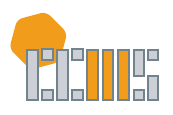Abstract / Synopsis
Visual representation of textual works has often aided in the understanding of sophisticated concepts. In the Digital Age this is particularly true, given the advent of natural language processing, the ubiquity of general programming languages, and the maturation of digital visualization. In this article, we eschew the traditional disciplinary boundaries to view and analyze Shakespeare’s works in various ways. Our point of departure is Hamlet, where we first examine the play as a unity — both graphically and analytically. We then focus on Act III, Scene 1, where we analyze one of the most famous passages in English Literature: Hamlet’s famous “To be or not to be” soliloquy. We study this passage with a sequence of progressively sophisticated content analysis software packages, each of which renders a useful artistic visual representation of the text. In these studies, we have gathered preliminary sets of context-free content data which allow us to give illustrations of a wide range of analytic tools. Throughout our explorations, we use new modes of linguistic exploration, synthesized from elements of philosophy, literature, mathematics, computer science, psychology, and the arts. Many of the methods, which help to form these new modes of exploration, may appear individually as Cartesian in nature, yet when collectively synthesized into a holism, form a fundamentally phenomenological study of human creativity.
DOI
10.5642/jhummath.201702.03
Recommended Citation
Randall E. Cone, "Perchance to Dream: Art, Mathematics, and Shakespeare," Journal of Humanistic Mathematics, Volume 7 Issue 2 (July 2017), pages 4-36. DOI: 10.5642/jhummath.201702.03. Available at: https://scholarship.claremont.edu/jhm/vol7/iss2/3
Terms of Use & License Information

This work is licensed under a Creative Commons Attribution-Noncommercial-No Derivative Works 4.0 License.
